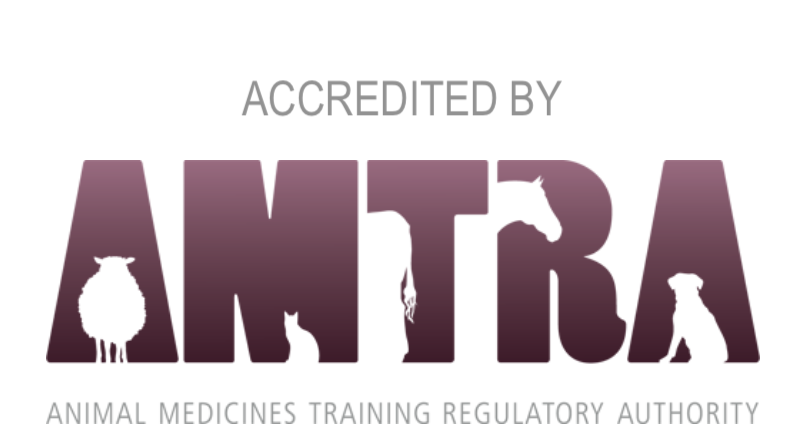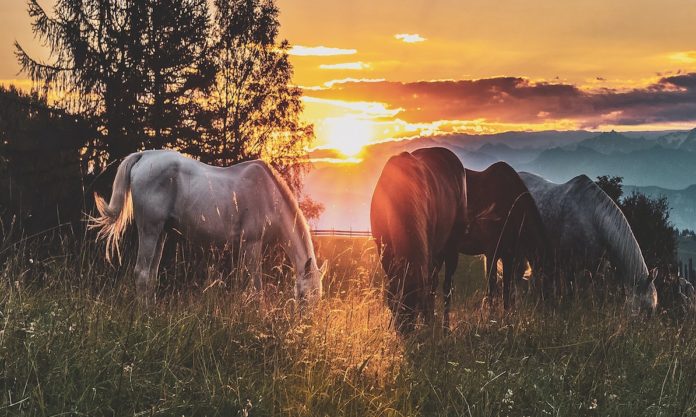
WHY STOCK BALANCERS?
The benefits of a balanced diet
Clare Barfoot RNutr, marketing and research and development director at Spillers, explains why balancers should be a mainstay on your shelves this spring and summer - and all year round.
Why is forage not enough?
With equine obesity on the rise, your customers could be forgiven for thinking that forage is more than enough for good doers although in reality, even spring grazing may be deficient in some key nutrients.
Whilst grass alone may provide up to three times the horse’s daily energy (calorie) requirements, certain nutrients such as lysine, copper, zinc and selenium are typically low in UK pasture. Vitamin E is the most important antioxidant and although grass alone may meet maintenance requirements, levels in hay and haylage may be negligible.
The importance of nutrients
A nutrient can be defined a substance that provides nourishment essential for the maintenance of life and growth; this is true for us and also for our horses.
Although we consider eating to be a source of enjoyment, fundamentally people and animals consume food in order to obtain nutrients. Good nutrition is about balance; and understanding the individual roles these nutrients play helps us to make a more informed choice when it comes to feeding our horses.
Balancers: small but mighty
For the overweight horse or good doer, cutting calories doesn’t have to mean cutting nutrition. Although small, the power of a balancer pellet is mighty!
A well-designed balancer will provide ideal levels of vital vitamins, amino acids and macro and micro minerals to balance the base diet with minimal calories and starch. This makes them the ideal choice for horses and ponies that maintain their weight on a forage-only diet or for those that require less than the recommended amount of compound feed.
Initiallyhorses may look fine when not being provided with a balanced diet; but the long-term effects may include poor hoof growth and condition, a compromised immune system and a lack of general wellbeing.
A balancer, with just 20% of the calories of the recommended daily amount of horse and pony cubes, can be used safely for horses and ponies on restricted diets.
Most balancers are designed to be fed at rate of 100g per 100kg of bodyweight per day, which equates to just 500g for a 500kg horse. One exception to this is stud balancers which, due to the higher protein and lysine requirements of lactating mares and youngstock, must be fed at a higher rate. Despite this, stud balancers still provide significantly less calories than the recommended ration of compound feed.
Does one balancer suit all?
Common questions asked on the Spillers Care-Line are ‘do I need a balancer?’ or ‘what do different balancers actually do?’ Some owners believe a cupful a day will supply enough additional calories to build condition. Others think a lite balancer is a magic diet pill for instant weight loss!
As with traditional feeds, balancers are formulated to meet the individual needs of the horse or pony they are designed for. By stocking a full range of balancers, you will give your customers the important opportunity to choose the most suitable product, based on the needs of their individual horse or pony and the base diet they are feeding.
- A standard balancer should be designed to balance the nutrients typically low in hay, haylage or pasture. Ideally it won’t have added iron, which is often over-supplied in forage-based diets.
- The ideal balancer to support weight loss should be high in amino acids, including extra lysine, methionine and threonine to help support lean muscle and topline. Other ingredients like cinnamon, FOS and magnesium may also helpful to support weight loss and a healthy metabolism.
- A premium range multi balancer should be rich in amino acids including lysine and methionine to support muscle development and topline. It will usually include antioxidants to support the immune system and probiotic live yeast and prebiotic MOS for digestive health.
- A stud balancer should contain optimum levels of amino acids including lysine, methionine and threonine to support safe, even growth and muscle development. Probiotic live yeast is often included to support digestive health and a high level of vitamin E to support muscle and immune health.
- A performance balancer should be used to enhance a performance diet. Ideally it should include antioxidants and vitamins E and C to support muscle, immune and respiratory health, and probiotic live yeast and prebiotic MOS and FOS to support digestive health.
- Senior balancers are usually designed tosupport digestion, comfort and movement in older horses. High levels of antioxidants help immune health and probiotics and prebiotics help support digestive health. Glucosamine is another important ingredient to support joint health. MSM and omega 3 are also useful additions to look out for.
KNOW YOUR NUTRIENTS
Water
Water isn’t a nutrient but needs mentioning as it is the most important, yet often most overlooked, component of the horse’s diet and is involved in almost every physiological body process. Water accounts for approximately 65% of body mass in mature horses and roughly 80% in foals. Idle horses (500kg) in ambient conditions drink approximately 25 litres of water per day!
Carbohydrates
Collectively, carbohydrates provide the largest source of energy in the horse’s diet and can be broadly categorised as either ‘structural’ (fibre) or ‘non-structural’ (sugars and starch).

Structural carbohydrate
Second to water, fibre is the most important component of the horse’s diet. Fibre is essential for gut health and the absorption of many nutrients. Fibre cannot be digested by enzymes and must be fermented by microbes in the large intestine (hindgut) to produce volatile fatty acids, which are converted to energy.
A slice of hay (2kg) could provide the same amount of energy as a scoop of a racing mix! For many horses at rest or in light work, forage alone can easily meet or even exceed energy requirements.
Non-structural carbohydrate (NSC)
The term NSC includes starch, sugar and fructan – which is the storage form of sugar in grass and other forages. Starch is broken down by enzymes in the small intestine, along with sugar. High starch and sugar diets may lead to excitability and/or play a role in clinical conditions such as colic, laminitis and tying up.
Protein
Protein is made up of a chain or sequence of amino acids which in your school biology lessons may have been referred to as the ‘building blocks of life’. Proteins are differentiated by the type, structure and sequence of amino acids. There are 22 amino acids in total, 10 of which are ‘essential’ (including lysine, methionine and threonine) which means they cannot be synthesised by the horse and must be provided by the diet.
Protein is not a primary energy source for horses and will not cause or exacerbate conditions such a laminitis, tying up or excitability.
Fats/oils
Whilst the natural diet of a horse doesn’t contain a large amount of fat, it is easily broken down in the small intestine and is well utilised as an energy source. In fact, at 3.5 MJ DE per 100mls, oil is around 2.5 times higher in energy compared to cereals, making it valuable alternative for those sensitive to higher levels of starch.
Vitamins and minerals
Although vitamins and minerals are required in relatively small amounts, they are involved in numerous essential body functions including the transmission of nerve impulses, muscle contractions, immunity, bone health, enzyme composition and energy metabolism.
Vitamins are classified as either ‘fat soluble’ (A, D, E & K) or ‘water soluble’ (B-complex and vitamin C) according to how they are absorbed, excreted and stored. Fat-soluble vitamins are not easily excreted and are stored either in the liver (A & D) or in fatty tissues (E & K). Water-soluble vitamins on the other hand cannot be stored and are excreted when over-supplied.
Minerals are classified as either ‘macro’ or ‘micro’ depending on the level in which they are required. Macro minerals are required in larger quantities (g/ day) and include calcium, phosphorus and magnesium; whilst micro minerals or ‘trace elements’, which include copper, zinc and selenium, are required in much smaller quantities (typically mg/ day).
More does not always equal better
Some vitamins and minerals can be harmful if oversupplied, including vitamins A and D, copper, zinc, iron, iodine and selenium. Although reaching toxicity is unlikely in the majority of cases, there are few ‘watch outs’, particularly when it comes to feeding supplements, so it’s wise to seek advice from a nutritionist first.
- If you or your customers would like any specific advice on feeding a balancer, please call the Spillers Care-Line on 01908 226626.
Sign up to receive notifications when new CPD features from ETN go online by clicking here
ABOUT ETN’S RAMA (SQP) CPD FEATURES

ETN’s series of CPD features helps RAMAs (Registered Animal Medicines Advisors, also known as SQPs) earn the CPD (continuing professional development) points they need. The features are accredited by AMTRA, and highlight some of the most important subject areas for RAMAs specialising in equine and companion animal medicine.
AMTRA is required by the Veterinary Medicines Regulations to ensure its RAMAs (SQPs) undertake CPD. All RAMAs (SQPs) must earn a certain number of CPD points in a given period of time in order to retain their qualification. RAMAs (SQPs) who read this feature and submit correct answers to the quiz questions will receive two CPD points. For more about AMTRA and becoming a RAMA (SQP), visitwww.amtra.org.uk
Photo by eberhard grossgasteiger on Unsplash











